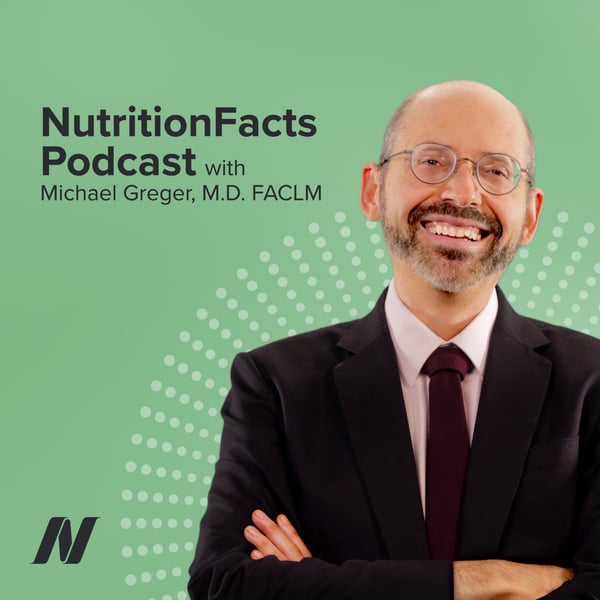COVID-19 Series: What Does the Future Hold?
Nutrition Facts with Dr. Greger
[email protected]
4.8 • 3.6K Ratings
🗓️ 5 November 2020
⏱️ 21 minutes
🧾️ Download transcript
Summary
This episode features audio from How COVID-19 Ends: Vaccination, Mutations, and Herd Immunity and The COVID-19 Pandemic May Just Be a Dress Rehearsal. Visit the video pages for all sources and doctor's notes related to this podcast.
Transcript
Click on a timestamp to play from that location
| 0:00.0 | Welcome to the Nutrition Facts Podcast. I'm your host, Dr. Michael Greger. Many of us are feeling |
| 0:07.2 | helpless in the face of the current pandemic, but the good news is there are things we can do right now |
| 0:12.8 | to reduce our risk of falling seriously ill and dying from COVID-19 and preventing even greater |
| 0:19.0 | infectious disease threats in the future. What should we expect in the coming months and years with |
| 0:25.9 | SARS-CoV-2? Let's look at the facts. Though the common cold coronaviruses follow a seasonal pattern |
| 0:34.2 | like the flu peaking every winter, there are other respiratory viral infections that peep in the |
| 0:40.2 | spring or the summer. In fact, MERS coronavirus, the last deadly coronavirus to cause an epidemic, |
| 0:46.6 | peaked in August in the sweltering heat and blistering sun of the Arabian Peninsula. |
| 0:52.8 | The mechanisms underlying the seasonality of viral respiratory infections remains a |
| 0:58.0 | subject of scientific debate as likely a combination of factors involving the virus itself, for example, |
| 1:05.2 | viral viability at different temperatures and humidity, host immunity, such as vitamin D status |
| 1:11.8 | and the drying of our airways, and host behavior like the crowding of susceptible individuals indoors. |
| 1:18.7 | However, the near-universal susceptibility to novel pandemic viruses may supersede these seasonal |
| 1:26.4 | factors. All the recent flu pandemics emerged in the spring or summer months. Those secondary waves |
| 1:34.3 | did tend to hit during the following winter. Even if the contagiousness of the COVID-19 virus drops |
| 1:40.8 | this summer in the northern hemisphere due to warmer weather weather, it is not expected to make a |
| 1:46.5 | large dent in the pandemic curve. What would stop the pandemic is herd immunity, having a |
| 1:54.2 | critical portion of the populace immune to the virus. An infection can only burn through a |
| 1:59.7 | population if there are enough susceptible individuals for the viral sparks to jump from one person |
| 2:05.5 | to the next. Immune individuals who can't get or transmit the virus act as fire breaks to slow |
| 2:11.4 | the spread or like control rods in a nuclear reactor to break the chains of transmission. |
| 2:17.1 | Ideally, this is accomplished through mass vaccination. Vaccines are a way to fight fire with fire |
... |
Please login to see the full transcript.
Disclaimer: The podcast and artwork embedded on this page are from [email protected], and are the property of its owner and not affiliated with or endorsed by Tapesearch.
Generated transcripts are the property of [email protected] and are distributed freely under the Fair Use doctrine. Transcripts generated by Tapesearch are not guaranteed to be accurate.
Copyright © Tapesearch 2025.

